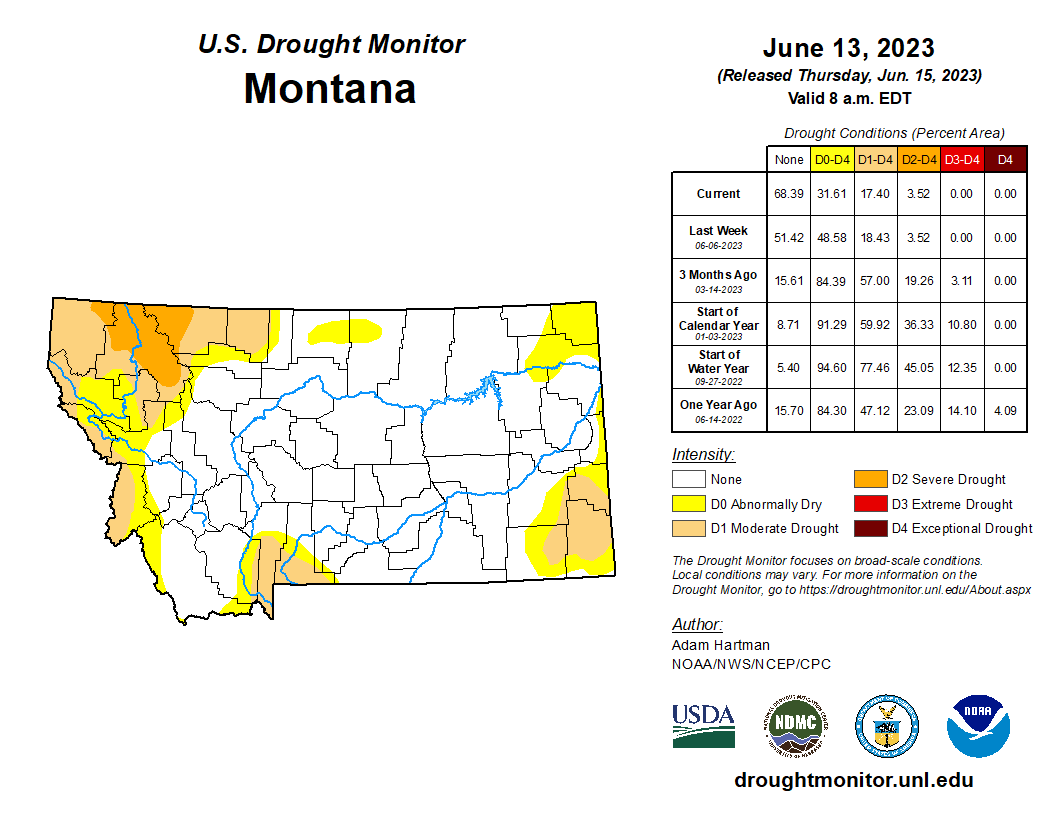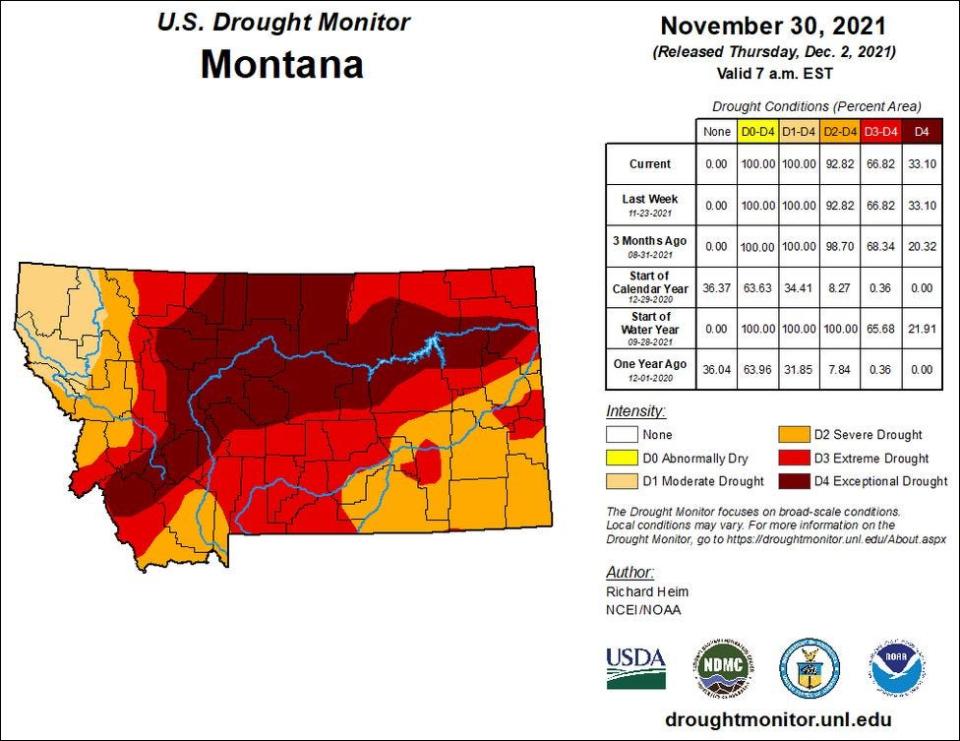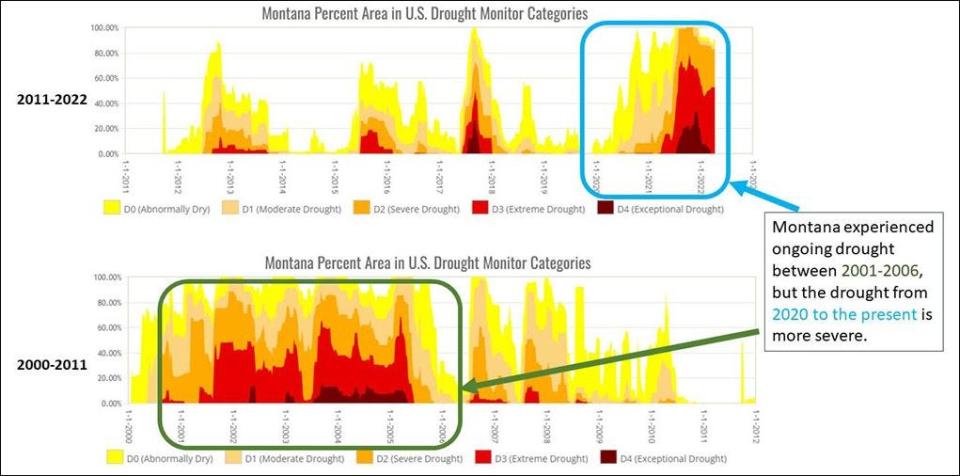Thirty-two days of rain bring central Montana drought to an end

Above normal precipitation and below normal temperatures throughout the spring have combined to put a stake in the heart of a lingering drought that has plagued Montana ag producers, firefighters and water resource managers for nearly three years.
Since the middle of April Great Falls has more rainy days than sunny ones, with 32 days of measurable precipitation in the 63 days since April 12. According to the National Weather Service total accumulation for that same period now stands at 7.6 inches, more than an inch-and-a-half above typical rainfall totals for April through June – that with 11 days yet to go before the end of the month.
Cool spring temperatures helped to keep things moist across most of central Montana, where daily highs since April have averaged 2.85-degrees below seasonal averages. It’s been good news for Montana farmers and ranchers, especially in the northeast corner of the state which had spent more than two years in exceptional drought.
Much of the State received moisture levels at or above normal,” the National Agricultural Statistics Service’s (NASS) most recent crop progress report states. “Some areas received rainfall totaling 4 inches or more.”
As of June 12, 87% of Montana pasture and range land was listed as being in fair to good condition. Wheat producers have even more reason to be optimistic, with 91% of the winter wheat crop listed as fair to good, and 95% of the spring wheat crop enjoying the same status.
In some areas the greater concern has not been getting enough rain, instead it was getting too much.
“Seeding and hay harvest were delayed in some counties due to the wet conditions,” the NASS report states. “Fungal disease and crop stress remained issues in areas that received excessive moisture. Widespread grasshopper infestations were ongoing concerns.”
“Weekly totals greater than two inches were common,” the U.S. Drought Monitor noted of the first two weeks in June, “especially from Montana to the central plains. Butte experienced its wettest June day in well over 100 years (1.82 inches on June 6th), surpassing 1.49 inches on June 14, 1948. Elsewhere in Montana, the airport in Bozeman endured its third -wettest day on record, with 1.89 inches falling on June 8.”

It’s a stark contrast to statewide conditions a year-and-a-half ago when 93% of Montana was in the grasp of severe drought conditions or worse, including the entire Missouri River Basin which was listed in the most dire “exceptional drought” status. As of June 15, of 2023, only the far northwest corner of Montana in the area surrounding Kalispell was still classified by the U.S. Drought Monitor as experiencing moderate to severe drought.
Not all of Montana’s neighboring states have received similar good news. Large sections of the corn belt, especially Kansas, Nebraska and northern Missouri, remain in extreme to exceptional drought.
“The region as a whole is a tale of two halves,” the U.S. Drought Monitor explains. “Improvement to the drought depiction is warranted across western portions of the Central and Northern Plains, where seven-day precipitation totals exceeded 200% of average. Conversely, deteriorating conditions are warranted across eastern parts of the High Plains region where heavy, convective rainfall was not enough to overcome … near and above normal temperatures and high rates of evaporation from the soils and vegetation.”
It’s significant to note that the optimistic tone of Montana’s current lack of drought is nearly identical to the situation three years ago. On June 15, 2020, only a small swab of southwest Montana in the area surrounding Dillon had any significant drought – then the rains turned off.

The U.S. Drought Monitor notes that Montana has experienced nearly continuous drought conditions to one degree or another in 17 of the last 23 years. So far; however, the forecast remains optimistic with above-normal rainfall across most the High Plains region predicted through the end of July.
This article originally appeared on Great Falls Tribune: Spring rains, cool temps bring Montana drought to an end

